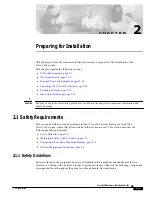
87 V/AN
Service Manual
14
within the band pass specification of the Meter. The signal at ACAMP_O is routed to the
Low-Pass Filter and/or the RMS Converter using multiplexer U12. The output of Low-
Pass Filter or the RMS Converter is routed back into CONV_IN (U1 pin13), filtered,
buffered and passed to FE_O (U1 pin 19) ready for measurement. If the Hz function is
selected, the scaled voltage at ACAMP_O is also routed within U1 to comparators that
will produce a digital signal at COMP_O (U1 pin 24) ready for frequency measurement.
VDC
The V/Ohms input is connected, as described in Table 11, to DIV_A (U1 pin 3) and
routed by U1 internal switches to one of the other resistors in the Z1 network to be
divided. The divided voltage is filtered, buffered and passed to FE_O (U1 pin19) ready
for measurement. If the operator selects the Hz function, the signal is routed within U1 to
comparators that will produce a digital signal at COMP_O (U1 pin 24) ready for
frequency or duty cycle measurement.
mVDC
The V/Ohms input is connected, as described in Table 11, to SENSE_HI (U1 pin 1) and
routed by U1 internal switches to be filtered, buffered and passed to FE_O (U1 pin19)
ready for measurement. The resistor Z1 (9.997 M
Ω
), is used to provide a 10 M
Ω
impedance across the Meter V/Ohms to COMMON input jacks by connecting DIV_A
(U1 pin 3) to R3 (U1 pin 9), which in turn is connected to COMMON by Z1 (440.4
Ω
)
and R8. This connection is opened by U1 when the HiZ input power up option is
selected. If the operator selects the Hz function, the signal is routed within U1 to
comparators that will produce a digital signal at COMP_O (U1 pin 24) ready for
frequency or duty cycle measurement.
Temperature
The V/Ohms input is connected the same as in mVDC to FE_O (U1 pin 19) with the
exception that U1 provides a gain of 10 to the signal. Another measurement of the
temperature of the input terminals where the thermocouple wire transitions to copper is
required to calculate the actual temperature sensed by a thermocouple. Since U1 is
controlled by the microprocessor, this measurement is done by routing two different
values of current from the U1 current source via RJT_I (U1 pin 35) to Q3 and the
resulting VBE is routed, buffered and passed to the FE_O (U1 pin 19) ready for
measurement. The reference junction temperature is calculated from these
measurements. Inductor L2 and capacitor C2 keep noise out of the measurement
circuitry. Since thermocouples are easily broken and give incorrect readings, a periodic
test of the thermocouple is required. A current from the U1 current source is routed to
ISRC (U1 pin36) and on to the thermocouple that is connected from V/Ohms to
COMMON. The resulting voltage drop across the thermocouple is connected to the U1
internal comparators and converted to a digital signal at COMP_O (U1 pin 24) ready for
evaluation by the microprocessor.
Ohms Below the 6 M
Ω
Range
The U1 current source is enabled and routed to ISRC (U1 pin 36) and on to the V/Ohms
input jack, which is also connected to SENSE_HI (U1 pin 1) via the components
indicated in Table 11. SENSE_HI is routed by U1 internal switches, filtered, buffered
and passed to FE_O (U1 pin19) ready for measurement. Resistor R51 sets the reference
for the 1 mA and 100
µ
A U1 current-source currents. Resistor R52 sets the reference for
the 10
µ
A, 1
µ
A and 0.5
µ
A U1 current source currents. Capacitors C4 and C5 are used
by the U1 current source charge pump to set the available compliance voltage at ISRC to
7.5 V with respect to COMMON. The 0.5-
µ
A current source is not used for resistor
measurements in these ranges. If the operator selects the Hz function, the signal is
















































